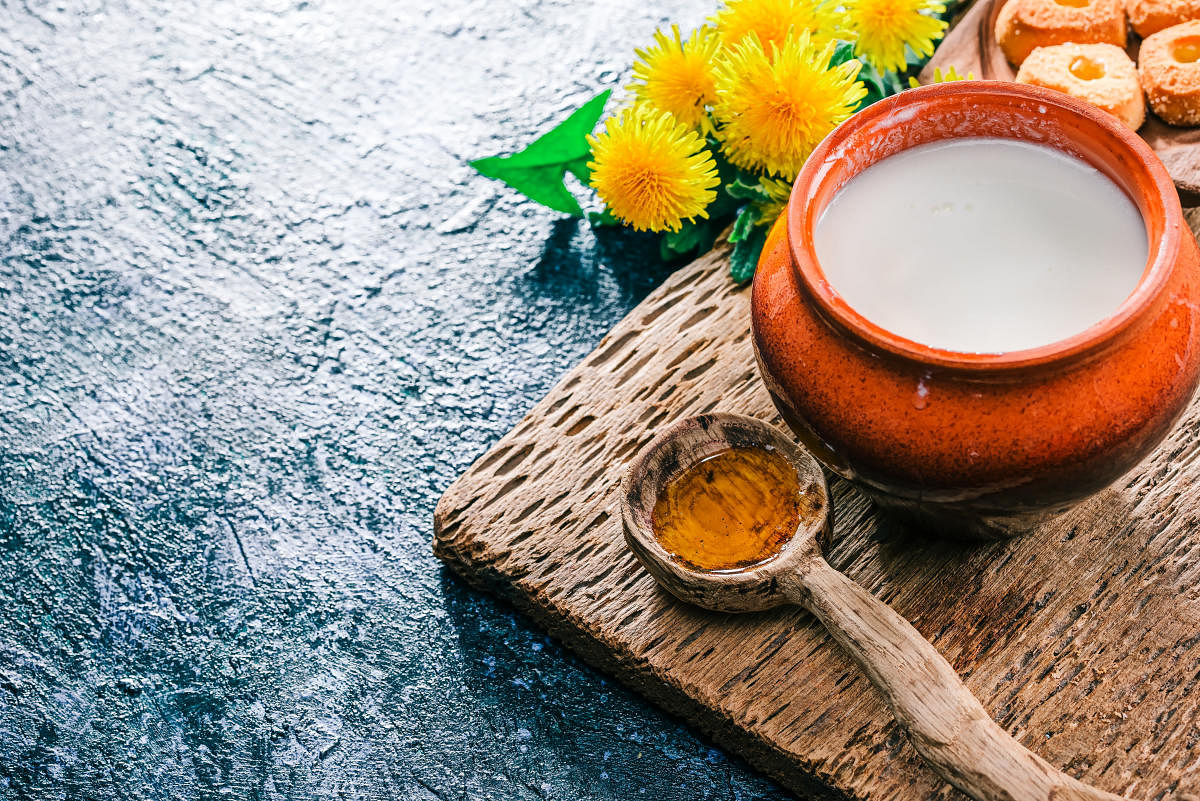
Most Indian restaurant menus proudly describe the creamy, buttery yoghurt drink lassi as an Amritsar special. This is not without a reason as the lassi in Amritsar is refreshing and takes one on a flavourful voyage when served cold in tall steel glasses, brass mugs, terracotta tumblers/earthen cups, or even throwaway cups — which became commonplace after Covid. Its main ingredients are yoghurt, milk, and sugar, and it is generously garnished with white makkhan and malai. However, the process of making it seems to include some sort of magic, starting with the creation of the yoghurt.
However, plain lassi is not the only flavour available as most stores have varieties ranging from popular options like mango, strawberry, and chocolate to some uncommon delicacies. For instance, Gian Di Lassi, one of the oldest and most well-known lassi shops in the walled city started in 1927, is known for its Peda lassi. When added to the lassi, peda, a traditional dessert made from just pure khoya, provides a richness of its own. “In a glass of 500 ml, we use two pedas that are mixed with little water in a brass vessel to make it buttery. The addition is heavenly,” shared Gurinder Singh, the co-owner.
“Our dedication to creating lassi is the reason why people from all over the world adore it. Even at four in the morning, we don’t skimp on quality,” he adds. Another store in the old town, Ahuja Lassi, is well known for its unique kesar-flavoured lassi. The shop’s young owner, Akshay Ahuja, disclosed that Brij Mohan, one of his elders, thought of kesar lassi and introduced it just a few years after the establishment of the business in the late 1950s. Our kesar comes from Kashmir, and we utilise it to manufacture kesar curd, which is used to make lassi. It continues to receive a lot of word-of-mouth recognition. After all, kesar is renowned for its many health advantages, particularly its calming effects on the mind. But finding the traditional Chatti Di Lassi, which is dwindling, will be a true blessing. The process starts the previous night and was once frequently made in households as well. “Milk is carefully cooked over cow dung cakes in a chatti, an earthen container. It takes a long time and requires regular churning. The process slightly reddens it, and the residual material is either made into curd or butter. This leftover material is then used to make lassi, which is the healthiest type of lassi,” says Ratanprit Kaur Pannu, a housewife who prepares it every day at home.